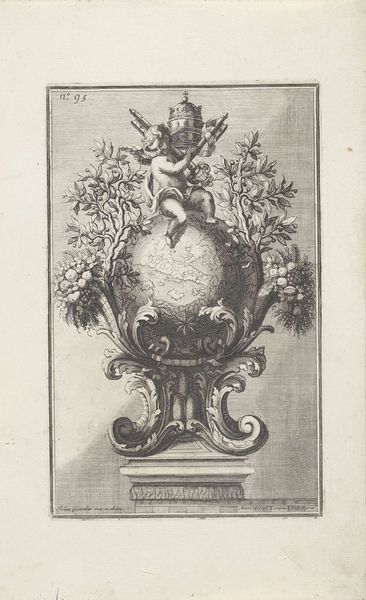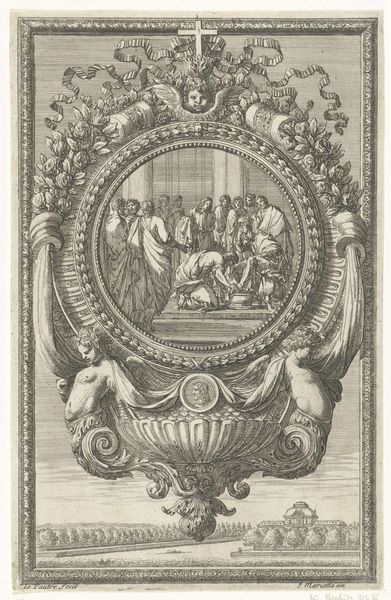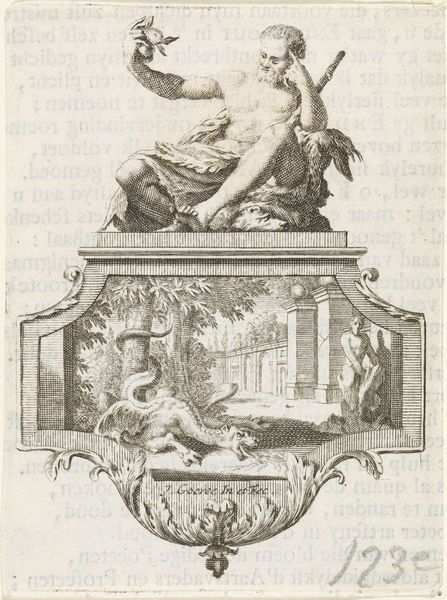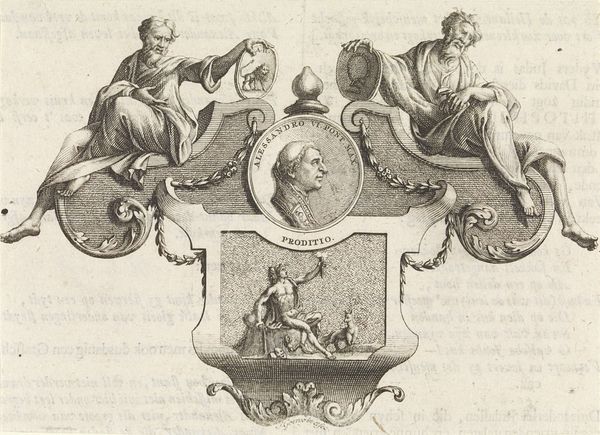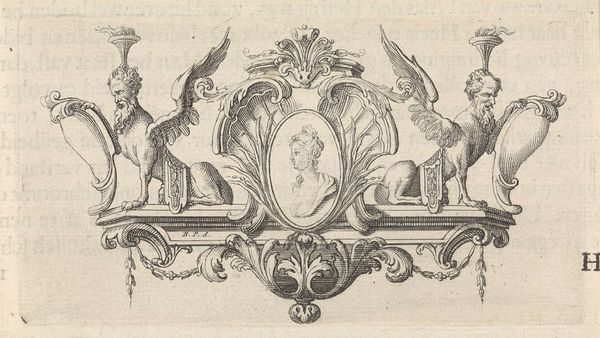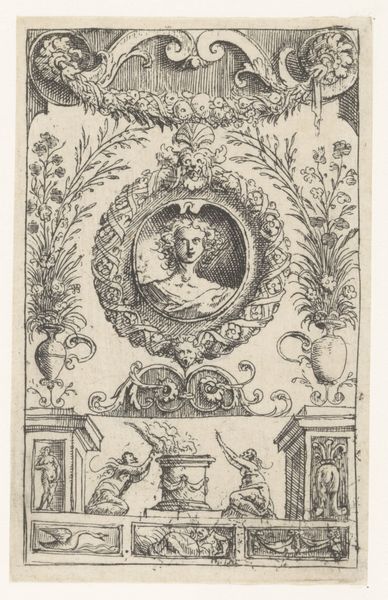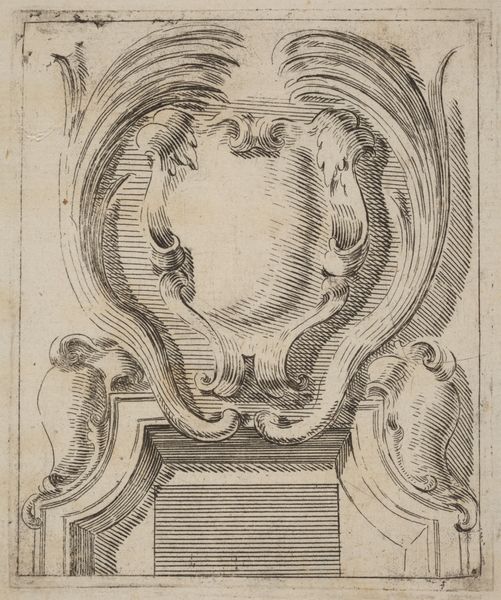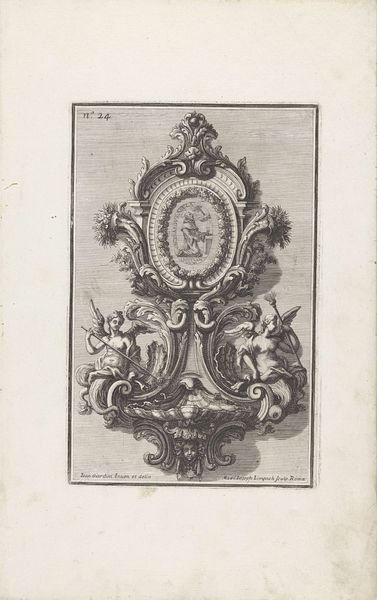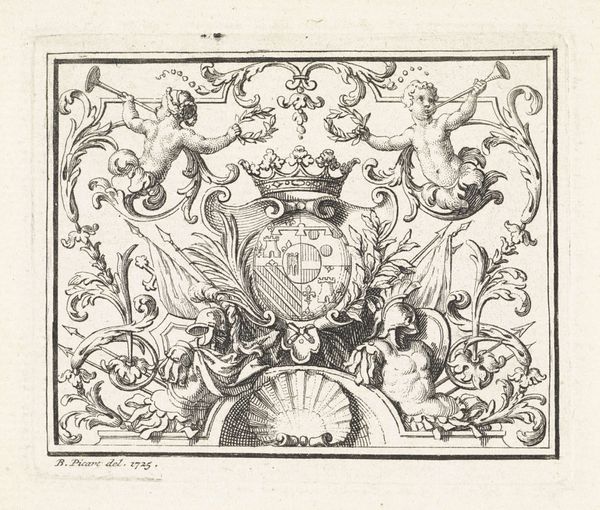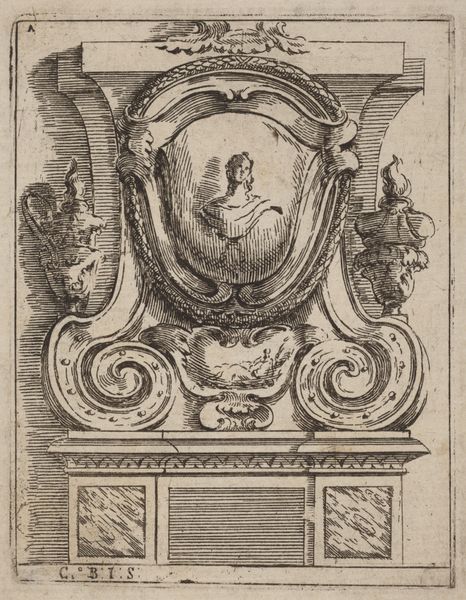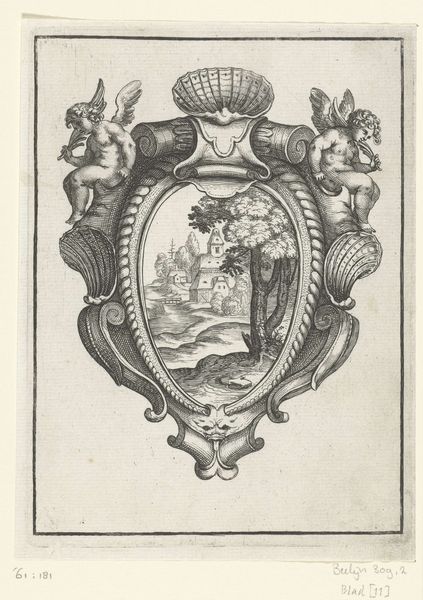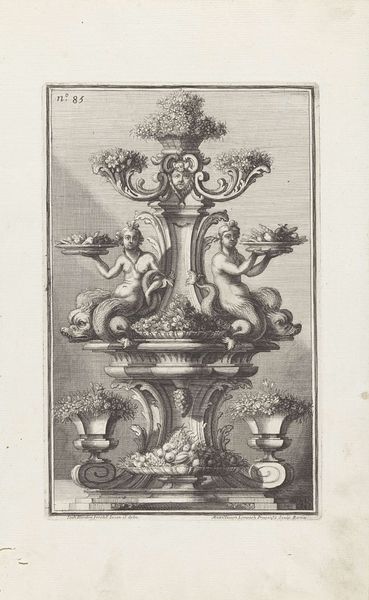
print, engraving
#
portrait
#
allegory
#
baroque
#
animal
# print
#
figuration
#
line
#
history-painting
#
engraving
Dimensions: width 134 mm, height 139 mm
Copyright: Rijks Museum: Open Domain
Curator: This intricate engraving, "Embleem: luipaard," was crafted in 1723 by Jan Goeree. The work presents us with an allegorical portrait of Alexander the Great. What's your initial reaction to its composition? Editor: It feels…powerful, yet strangely restrained. All these beasts—leopards, goats, a chimeric figure below—tethered to a central medallion with Alexander's stoic profile. It suggests contained wildness, perhaps. The Baroque love of embellishment is definitely in full swing. Curator: Precisely! The leopards themselves, acting almost as heraldic supporters, are fascinating. Leopards were often associated with Dionysus and linked with frenzy. What readings do you get? Editor: Oh, yes! Seeing them alongside Alexander is key. It juxtaposes Alexander's image with the untamed—a hint that even the most controlled figures possess underlying, perhaps even dangerous, energies? Power must somehow be reconciled with primal instinct. It almost feels as though his essence could not be separated from this animality. Curator: Intriguing. The inclusion of a goat adds another layer. The goat could be a symbol of strength but also of lechery, which links again with Dionysus and uncontrolled behaviors. It all emphasizes that even historical figures weren't flawless. And this detail that they are reposing on what appears to be fruit suggests plenty. Editor: So, this print encourages the viewer to move beyond simple reverence of great figures to consider the complexity within their lives. What looks composed is built on contradiction, conflict. The helmet and weapons even seems to remind us that for all we attempt to build, war always shapes our world. Curator: I think that’s a really astute observation. The Baroque artists certainly relished revealing complexities, even in straightforward portraiture. Perhaps the viewer is asked to acknowledge these forces within their own self and society, the individual Alexander perhaps becoming allegorical of humankind itself. Editor: Absolutely. Looking at this, I’m reminded that images, and the symbols that constitute them, have their own layered pasts, accumulating meanings as they are carried through time. Each reading of the images reinscribes the original intent. Curator: Which is exactly why artworks like this remain so engaging, centuries later. Thank you for bringing your perspective to it. Editor: Thank you! It's a piece that stays with you. The tension between control and untamed desire…it echoes so much in our contemporary lives, doesn’t it?
Comments
No comments
Be the first to comment and join the conversation on the ultimate creative platform.
